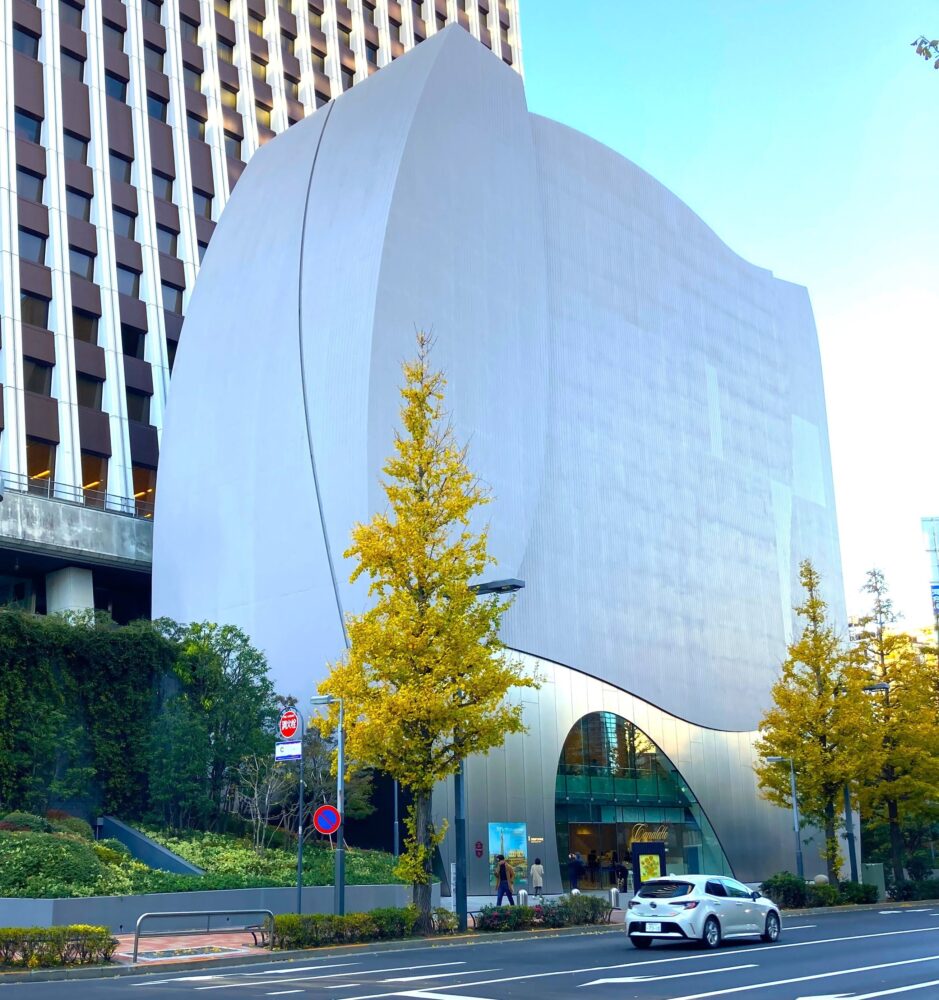
The only place in Japan where you can see Van Gogh’s Sunflowers!
Just a short walk from Shinjuku Station, in the middle of the skyscraper district, you’ll find a surprisingly calm space: the SOMPO Museum of Art. Many art lovers will recognize the name right away—it’s famous for housing Vincent van Gogh’s world-renowned masterpiece Sunflowers.
The museum was originally known as the Seiji Togo Memorial Sompo Japan Nipponkoa Museum of Art. In 1987, it made headlines by purchasing Sunflowers for an astonishing 5.3 billion yen, a record-breaking price at the time.
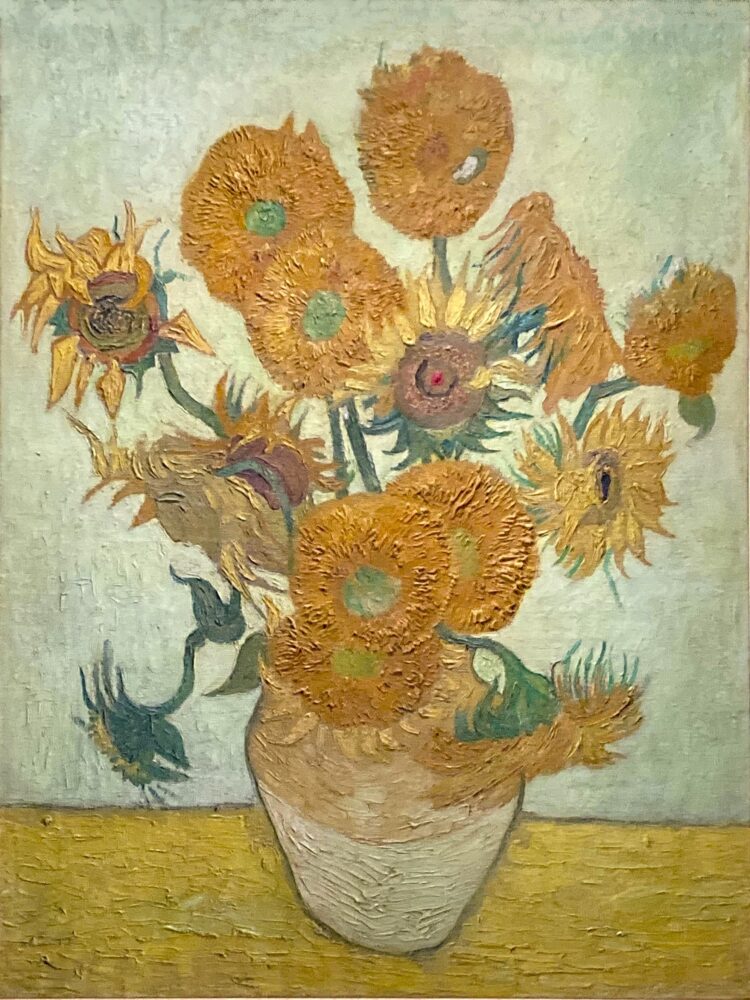
Collection of the SOMPO Museum of Art
This version of Sunflowers is part of the series Van Gogh painted during his stay in Arles, southern France. It is considered one of his most iconic works, standing out even among the more than 20 Van Gogh paintings in Japan. In fact, the SOMPO Museum is the only museum in Asia where Sunflowers is on permanent display—one of the main reasons art fans from all over the world come here.
The Unexpected Connection Between Sunflowers and Japan
You might wonder: Why Van Gogh in Japan? The answer lies in Van Gogh’s deep admiration for Japanese culture. He was heavily inspired by ukiyo-e woodblock prints, and he felt that the landscapes of Arles had a “Japanese spirit,” which encouraged him to paint so many works there.
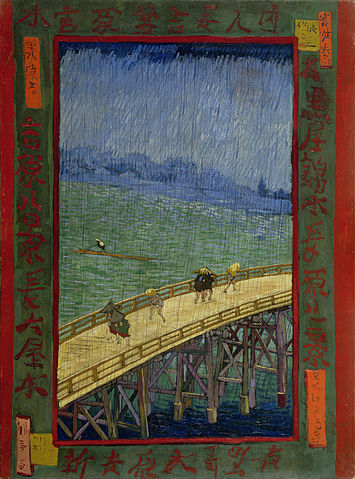
Collection of The Van Gogh Museum, Amsterdam
Based on Utagawa Hiroshige’s Sudden Shower over Shin-Ōhashi Bridge and Atake
When you know this background, looking at Sunflowers feels different. The bold lines and vivid colors carry a sense of Japanese aesthetics, making the painting even more fascinating.
And the best part? Sunflowers is on permanent display at the SOMPO Museum. After exploring the special exhibitions, you can end your visit by quietly standing in front of Van Gogh’s masterpiece. It’s a rare and unforgettable moment, offering a touch of luxury away from daily life.
So next time you’re in Shinjuku, step out of the city’s busy streets and enjoy the calm atmosphere of the SOMPO Museum. Take your time, and have a one-on-one “conversation” with Van Gogh’s legendary Sunflowers.
Discover the Story Behind Van Gogh’s Sunflowers at the SOMPO Museum

Arles, the Town Where Sunflowers Was Born
Let’s take a closer look at the museum’s highlight: Vincent van Gogh’s Sunflowers.
In 1888, at the end of a cold February, Van Gogh traveled to Arles, a town in southern France. Surrounded by snowy landscapes, he compared what he saw to Japanese paintings he admired.
“the landscape under the snow with the white peaks against a sky as bright as the snow was just like the winter landscapes the Japanese did. “
— Vincent van Gogh, as quoted in Letter 577, Vincent van Gogh The Letters, Van Gogh Museum and Huygens ING
Van Gogh had already discovered ukiyo-e woodblock prints in Paris and was fascinated by their clear lines and bright colors. In the light and scenery of Arles, he sought to create his own vision of “Japan.” From this point onward, his paintings became brighter and more colorful.
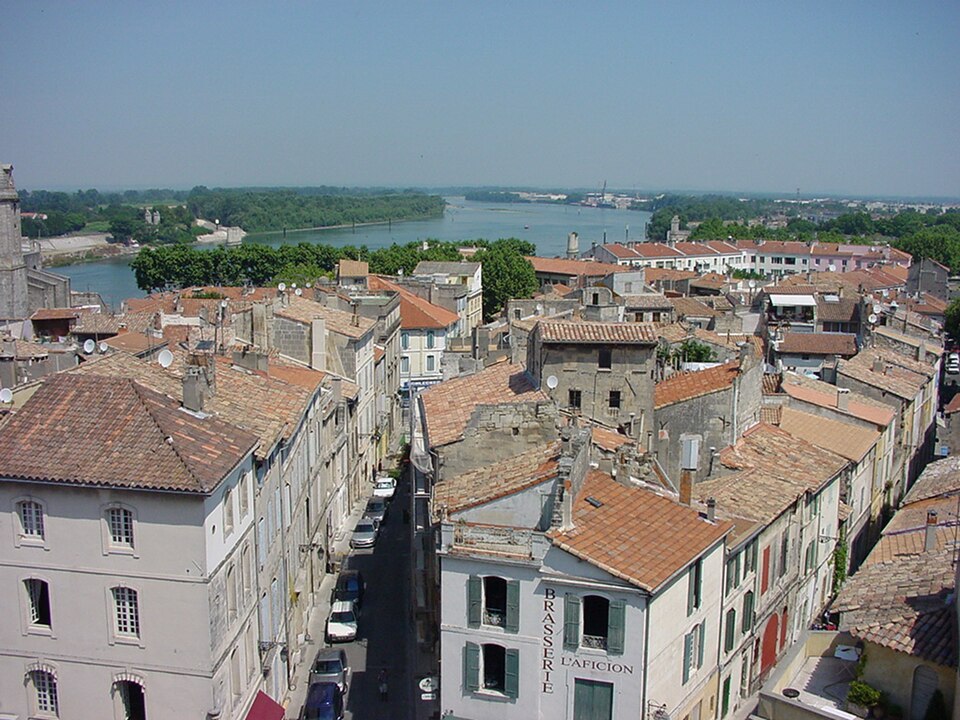
img: by Alistair Cunningham
Painted for Gauguin?
During his stay in Arles, Van Gogh began a short but famous shared life with Paul Gauguin at the “Yellow House.” To decorate Gauguin’s room, he painted a series of Sunflowers. In the summer, he created four versions of the work.
The Sunflowers now at the SOMPO Museum of Art is one of the later versions, painted by Van Gogh himself in the winter. It was not just a copy but a “re-creation,” bringing the summer flowers back to life on canvas in his winter studio.
Inspired by the Sunflowers at the National Gallery in London, Van Gogh gave this work a unique bluish background. The cooler tones make the yellow petals stand out even more, giving the painting a sharper, more striking presence.
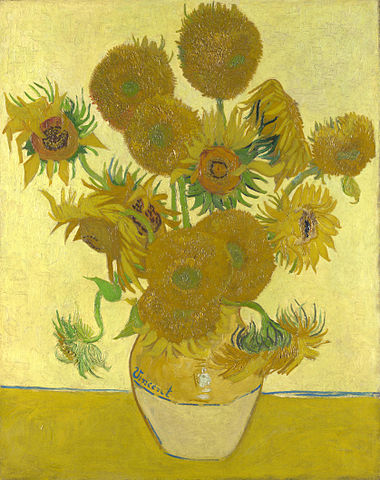
Collection of the National Gallery, London
A Masterpiece Born from the Search for Color
Many people imagine Van Gogh as a genius who painted only by emotion. But in reality, he studied color theory, learned from other painters, and worked in a surprisingly methodical way.
By painting the same subject over and over, he was not simply repeating himself—he was testing color, composition, and new ways of expression. Through this process, Van Gogh gradually established the bold, recognizable style we know today.
That is why the Sunflowers at the SOMPO Museum is so special. It captures both Van Gogh’s experimental spirit and his artistic passion. The influence of Japanese prints, Impressionism, and his own personal vision of the world all come together in this one extraordinary painting.
More Than Just Sunflowers: Highlights of the SOMPO Museum
When people think of the SOMPO Museum of Art, Van Gogh’s Sunflowers usually takes the spotlight. But the museum has much more to offer. Its collection includes works by French masters such as Paul Cézanne, Pierre-Auguste Renoir, and Paul Gauguin, as well as paintings by Japanese artists like Seiji Togo.
Now, let’s take a look at one particularly moving piece from the collection.
Richard Roland Holst, “Cover Design for the Catalogue of the ‘Van Gogh Exhibition’ “(1892)
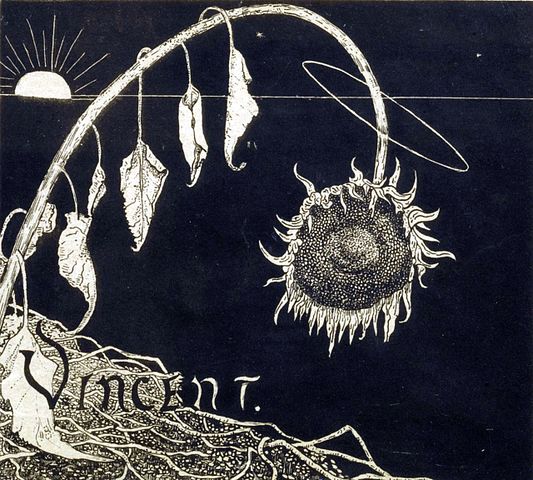
About This Work (Tap or Click to View)
After Van Gogh’s death, it was his sister-in-law Johanna Bonger, the wife of his brother Theo, who dedicated her life to preserving his legacy. She protected his paintings and letters, and worked tirelessly so that his art would never be forgotten.
Her efforts culminated in a major retrospective exhibition in Amsterdam in December 1892. This show displayed an impressive 87 oil paintings and 25 drawings, leaving a lasting impact on the public.
The exhibition was supervised by Richard Roland Holst, a close friend of Johanna. He also designed the cover for the exhibition catalogue—the very piece you see here.
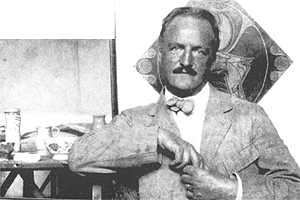
The artwork shows a drooping sunflower against a setting sun, almost fading with exhaustion. Yet, the strong roots in the ground and the halo-like glow around the flower suggest something deeper: a tribute to Van Gogh, the artist who devoted his life to art.
Though this lithograph is black and white, its lack of color gives it a special quiet power. The simplicity invites viewers to imagine their own colors, emotions, and interpretations. It’s a reminder that sometimes, silence can speak louder than words.
Paul Gauguin, “Lane at Alyscamps, Arles” (October–November 1888)
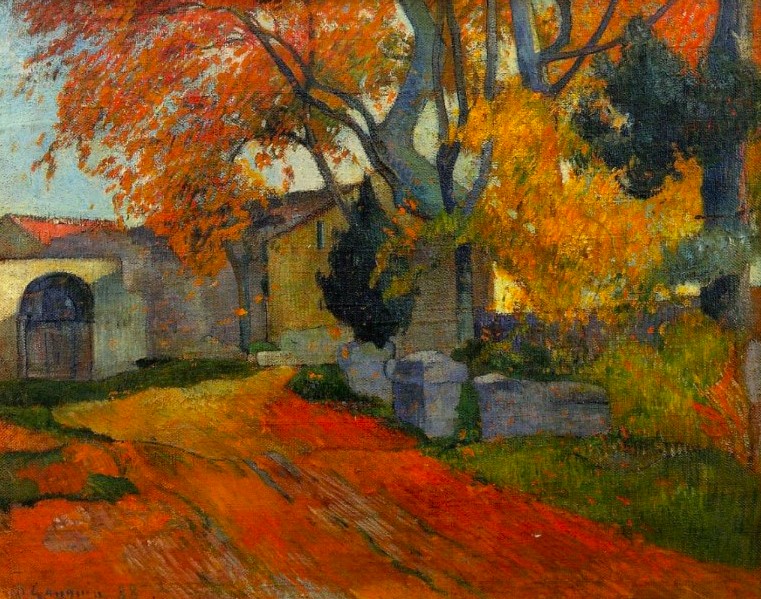
About This Work (Tap or Click to View)
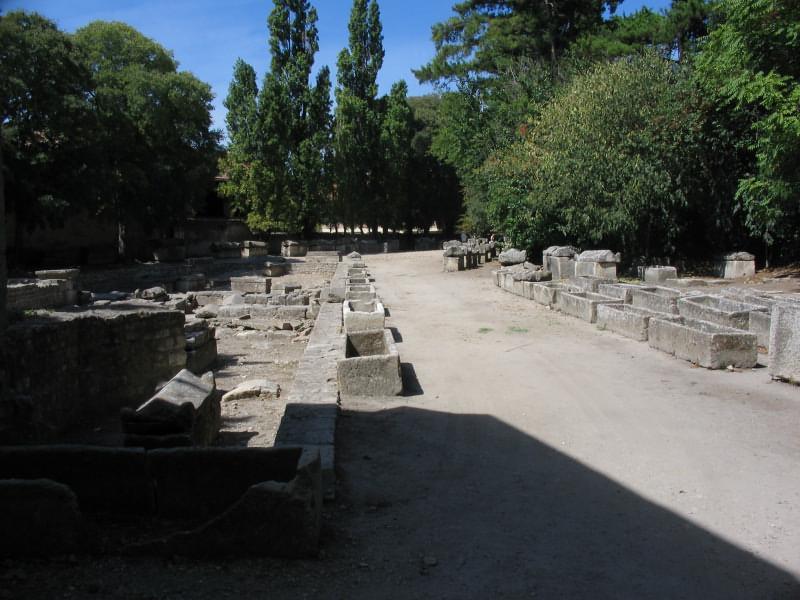
Today, the Alyscamps in Arles, southern France, is a peaceful walking path lined with poplar trees and old churches. But in ancient Roman times, it was one of the region’s largest cemeteries. In the late 20th century, the site was added to the UNESCO World Heritage list as part of the “Arles, Roman and Romanesque Monuments,” recognized for its historical value.
In the autumn of 1888, two painters walked down this very avenue: Paul Gauguin and, of course, Vincent van Gogh. Gauguin had just arrived in Arles to begin his short-lived stay at Van Gogh’s “Yellow House.” Together, they visited the Alyscamps, and each painted the same scenery in his own style.
The SOMPO Museum of Art owns one of Gauguin’s two paintings of the Alyscamps. In this canvas, the reds and yellows of autumn leaves blend with the blue sky and gray stones, creating a dreamlike atmosphere.
This use of bold, symbolic color is pure Gauguin. Rather than focusing on realism, he expressed what he felt, prioritizing emotion and symbolism over accuracy. Within this striking color harmony, you can still sense the quietness of the ruins and the passing of the seasons.
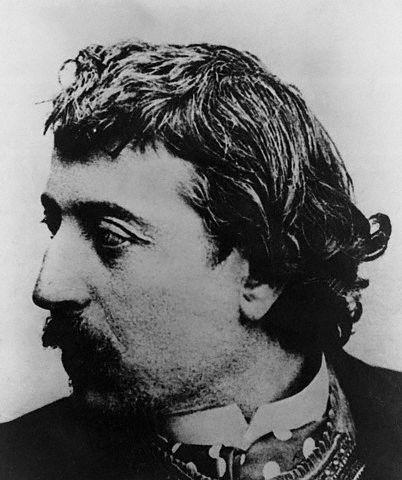
On the very same day, Van Gogh also painted the Alyscamps. Standing before these works, you can imagine the two artists comparing their paintings afterward, discussing their different approaches to the same subject.
Of course, their collaboration didn’t last long. The shared life of Van Gogh and Gauguin in Arles collapsed after just two months. But this painting preserves a trace of that intense, creative period—a moment in time when two giants of modern art walked, observed, and painted side by side.
.jpg)
Private Collection
Paul Cézanne, “Apples and Napkin” (1879–1880)

About This Work (Tap or Click to View)

At first glance, this painting seems simple: just a few apples and a napkin on a table. But the longer you look, the more powerful its presence becomes. This is the magic of Paul Cézanne’s Still Life with Apples and Napkin.
Cézanne (1839–1906) is often mentioned alongside Van Gogh and Gauguin as one of the key figures of Post-Impressionism. While he began with the light-filled style of the Impressionists, his real goal was different. Instead of capturing fleeting light, he aimed to paint the very essence of objects—their structure and permanence.
In the early 1870s, his friendship with Camille Pissarro helped him brighten his palette and add more color to his works. But by the late 1870s, Cézanne was moving in his own direction, focusing less on surface impressions and more on how things were built.
A Turning Point in His Style
Painted around 1879–1880, this still life shows that transition. Look closely: the apples and the napkin have shadows, but they don’t feel purely realistic. Instead, they appear almost constructed out of planes and shapes. The colors are subtle, the highlights restrained—but the forms themselves seem to push forward with a solid, sculptural strength.
In this sense, the painting feels almost architectural or sculptural. Cézanne built his images with brushstrokes like building blocks, layering and constructing the scene piece by piece. This approach later inspired the Cubists—artists like Picasso and Braque—who took Cézanne’s ideas about structure and form to new heights.
Auguste Renoir, “Young Woman with a Hat” (1910)
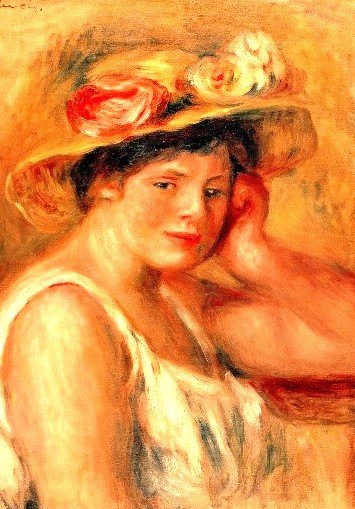
About This Work (Tap or Click to View)

Auguste Renoir is one of the great masters of Impressionism, famous for his portraits filled with light, warmth, and color. Among his most beloved subjects were women, and this painting, Young Woman with a Hat, is a perfect example.
The model fills the canvas with a soft, rounded presence. Her expression is slightly shy, yet full of charm. The flowers on her hat and the folds of her dress are not painted in sharp detail; instead, they dissolve gently into light and color, giving the whole work a luminous, tender atmosphere.
This is the essence of Renoir’s genius: he didn’t “over-paint.” He suggested forms with brushstrokes that allow viewers to feel rather than simply see.
What makes this portrait even more moving is Renoir’s condition at the time. By 1910, he was suffering from severe rheumatoid arthritis, and his joints were badly deformed. Yet, his brushwork remained astonishingly free, vibrant, and full of life.
Looking at this canvas, you can sense his quiet determination to keep painting beauty, even while living with pain. At the same time, the picture radiates calm and warmth—it’s as if the woman’s gentle presence invites you to relax and smile.
Visiting the SOMPO Museum of Art in Tokyo, travelers can experience not only Van Gogh’s Sunflowers but also treasures like this Renoir, which remind us of the resilience of art and the human spirit.
SOMPO Museum of Art – A Place of Quiet Inspiration
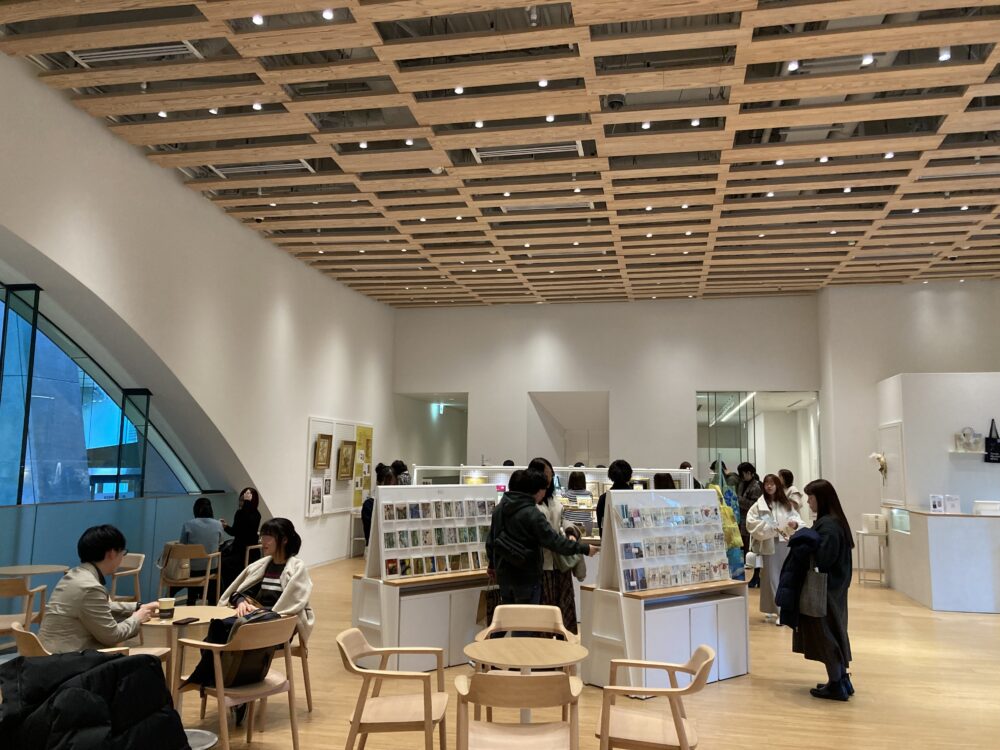
More Than Just Sunflowers
When people think of the SOMPO Museum of Art in Tokyo, the first image that comes to mind is usually Van Gogh’s masterpiece Sunflowers. It is the symbol of the museum, and one of the few places in the world where travelers can see this famous painting up close.
The museum also holds special exhibitions about 4–5 times a year, often featuring works from its own collection, including pieces by Cézanne, Renoir, and Gauguin. The lineup changes depending on the theme, so if you have a favorite artist, it’s best to check the museum’s website before visiting.
But Van Gogh’s Sunflowers is different—it is almost always on display, usually placed in the final gallery, allowing visitors to end their journey face-to-face with this unforgettable work.
A Peaceful Escape in the Heart of Shinjuku
Shinjuku is known for its busy streets, neon lights, and endless crowds. Yet, just a short walk from Shinjuku Station’s West Exit, the SOMPO Museum offers a completely different atmosphere. Inside, the noise of the city fades away, replaced by calm galleries where you can reflect quietly on each painting.
Whether you come specifically to see Sunflowers, or you drop by to explore a temporary exhibition, the museum is not only a place to enjoy art—it’s also a space to slow down, recharge, and find inspiration.
On days when you feel tired, or when you’re searching for a spark of creativity, this museum can be the perfect retreat.
SOMPO Museum of Art – Visitor Information
Location: 1-26-1 Nishi-Shinjuku, Shinjuku-ku, Tokyo


Comments